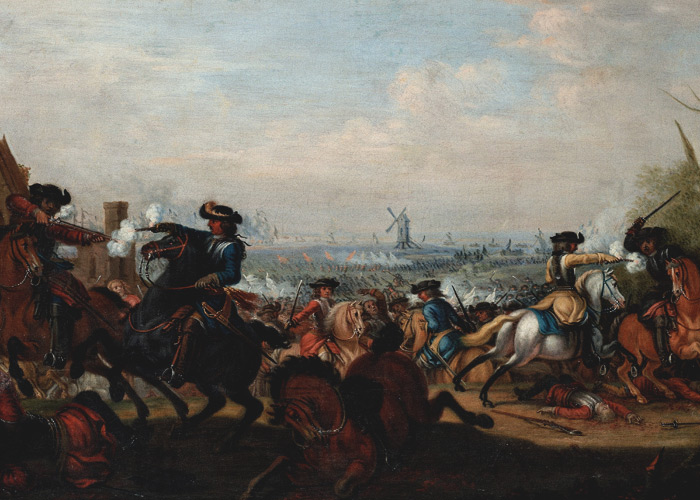Course #2 / Duchy of Courland and Semigallia

If you're acquainted with the lessons of history, you probably already know that it’s rare for colonization to be a peaceful, bloodless process. Professionals from the best writing services, who are often busy with researching the topic for history essays, can easily confirm this. The same can be said about this case as well. Period of success and prosperity in the Duchy of Courland and Semigallia did not last long, just about a decade. Several objective reasons and circumstances led to downfall and loss of wealth and newly acquired colonies.
The most crucial one was the Second Northern War between Sweden and the Polish-Lithuanian Commonwealth that started in 1655. Duchy once again was caught in-between two European strongholds. The turning point for Courland and Semigallia was the capture of Duke Jacob by Swedes in 1658. He never tried to put too much effort into strengthening his army and his residence in Mitau was captured without any serious resistance. Golden Years of Duchy were about to end.
For a few next years, Duchy’s existence was pretty much paralyzed without its ruler and it suffered massive losses. Wars always take their toll and this one was no exception. Enemies raided and destroyed all they could around the Duchy. Manors, manufactures, shipyards and large, newly built ships – everything was particularly or completely destroyed. Foreign soldiers showed no mercy. By estimations of the Duke’s officials, Duchy suffered more than 6.5 million thaler loss in just a two year period.
War caused a serious lack of support for the colonies. There always was a serious competition between Curonian, Dutch, Spanish, French and English ambitions in the New World conquering. The capture of Duke Jacob left already struggling colonies on their own and the opponents quickly took advantage. Gambian lands eventually fell into English hands, while Tobago owners changed several times. Initially, Dutch brothers Lampsins were directly competing with the Curonian colonists. They had an advantage. Northern War cut down the human resources and military support to Tobago Island from the Duchy of Courland and Semigallia, while Lampsins kept supporting their overseas lands. Their part of the island grew in strength and new ships with supplies and colonists continued to arrive regularly.
Another crucial moment was the process of colonization itself. Imagine the average man and the environment around him in the 17th century. Life is about hard work and survival. Knowledge about foreign lands or overseas is close to none. Even more, it does not even matter. Then those hard-working men are thrown into an adventure full of danger. While life in serfdom was more or less stable – serfs just had to do their job, colonial life was unpredictable. Not everyone was strong enough to survive on the way to the colony. Failed expeditions to the New World was a common thing. Ships were often caught in storms, food supplies started to rot. After arrival, Tobago did not become an instant safe haven as well. Curonians faced an unfamiliar climate, various unknown diseases and fierce local Carib tribes that often made attacks on the colonist settlements.
Colonial life was full of danger and lack of support from the Old World meant that Duke Jacob’s dream about the development of Tobago Island was about to come to the end. Curonians that survived all odds and the attacks from Caribs and rival nations – were left in misery. The strongest and adventurous ones joined buccaneers to attack the ships in the Caribbean Sea. There were also some Curonians, who were sold to work on the plantations in Jamaica. Former serfs in Courland once again lost their freedom overseas. However, for most of them – becoming a slave was the only chance to save their lives.
Despite Duke’s efforts to regain the lost glory of his Duchy, all the circumstances were against him. After the Northern War, Jacob was released and he returned to Mitau in 1660. Jacob got his state back in even more poor condition than it was when he first became a Duke of Courland and Semigallia. His enthusiasm once again helped to re-build some of the lost manufactures and long years of diplomatic maneuvers between the European biggest courts even brought back Tobago for a while. However, Golden Years never came back and Duke Jacob died in 1682. His successor Duke Friedrich Casimir was more interested in diplomacy, culture, and arts, rather than continuing his father’s path of mercantilism and colonial policy. In 1693, he sold Tobago to England.
In the early 18th century, Duke Ferdinand Kettler intended to bring back the Tobago Island through diplomatic talks with England, but Duchy was not as strong and influential on the European stage, as it was in Duke’s Jacob’s era. In 1737, Kettler dynasty came to the extinction after the death of Duke Ferdinand. Duchy soon welcomed the new Duke Ernst Johann Biron – a favorite of Russian Empress Anna. However, Biron dynasty lasted only until 1795 when Duchy of Courland and Semigallia ended its existence and was incorporated into the Russian Empire.
Despite the fact that Curonian colonial journey was relatively short and years of glory did not last long, the Duchy of Courland and Semigallia left its mark on the history of colonization. It was one of the smallest states to own a colony overseas. Duchy was less than 30 000 km2 in the territory and in the Golden Years, its population was approximately just 200 000. Humble numbers, compared to the nations Curonians tried to compete with. However, these numbers might be the easiest explanation, why the prosperity of Courland and Semigallia lasted only a decade. The forces were unequal.
Sources | Edgars Andersons. Senie kurzemnieki Amerikā un Tobāgo kolonizācija (1970) | Žanis Bundurs. Senās latvju kolonijas (1992) | Jānis Juškēvičs. Kurzemes hercogi un viņu laikmets (1993) | Alexander Valdonis Berkis. The history of the Duchy of Courland (1561-1795) (1960)

